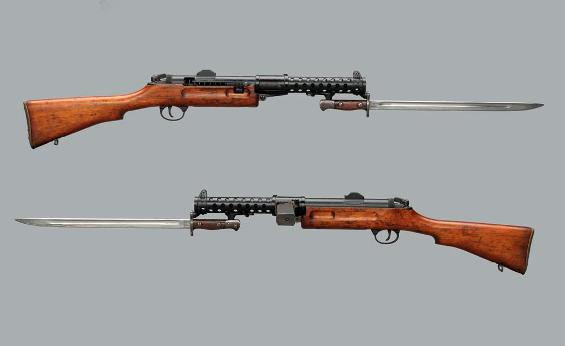Canada's Naval History
www.warmuseum.ca/navalhistoryCanadian War Museum

Second World War (1939-1945)
The Navy in European Waters - D-Day and the Normandy Landings
Over 100 Canadian warships and some 10,000 Canadian sailors supported D-Day, the 6 June 1944 landings in Normandy. Canadian ships and sailors helped protect the invasion fleet, cleared German minefields, and ferried Allied troops across the Channel.

Lanchester Sub-Machine-gun
Members of the Royal Canadian Navy's Beach Commando "W" carried Lanchester sub-machine-guns like this example.
The Lanchester, based on a German design, was the Royal Canadian Navy's standard sub-machine-gun, and could be fitted with the long bayonet seen here. Beach Commandos were created to coordinate operations on the beachhead during amphibious landings like D-Day. Beach Commando "W", created in late 1943, was sent to Juno Beach, the Canadian landing area in Normandy, in early July 1944, and returned to the United Kingdom in August.
Automatic Sub Machine-gun, Lanchester MK I*
CWM 19640038-001
Bayonet, Pattern 1907
CWM 20000132-002